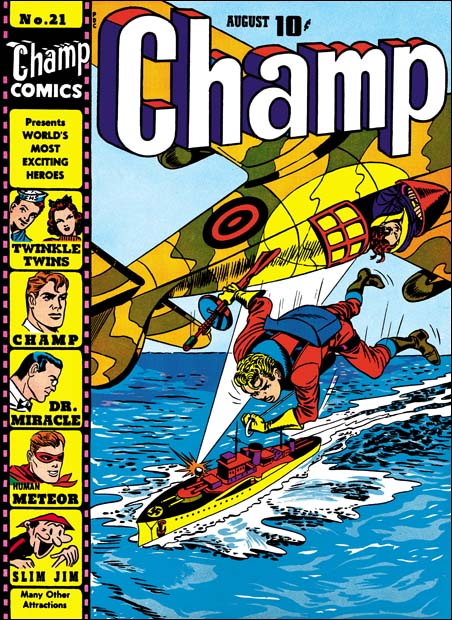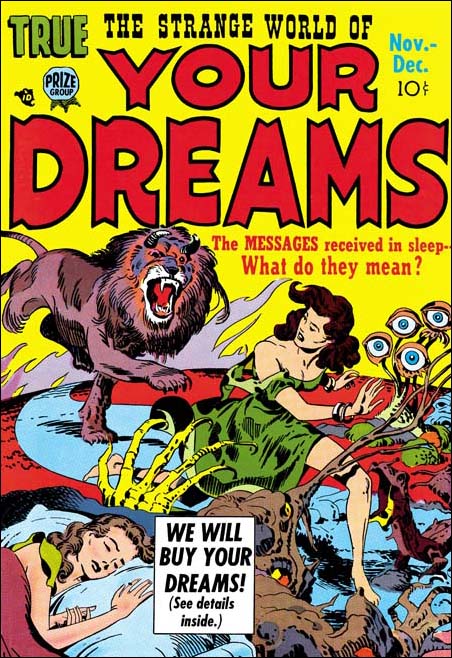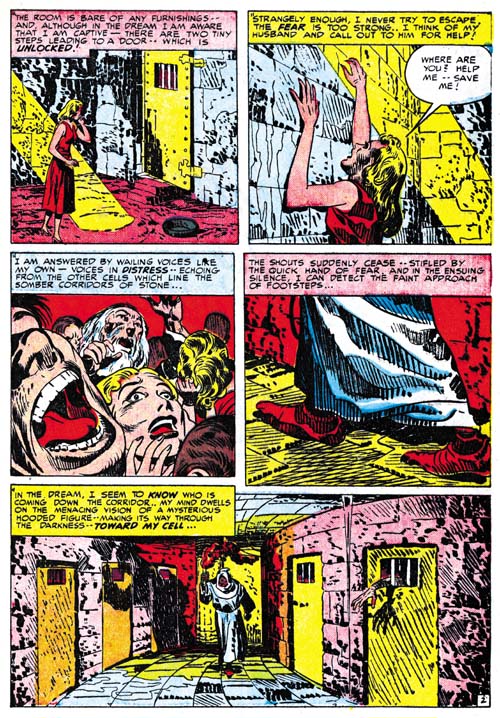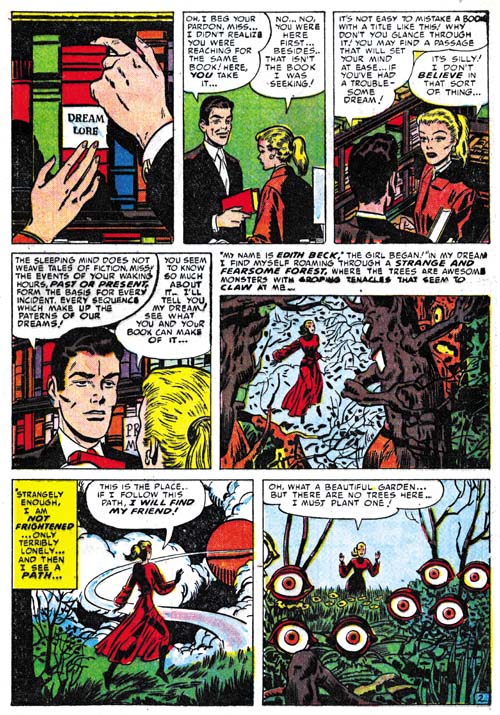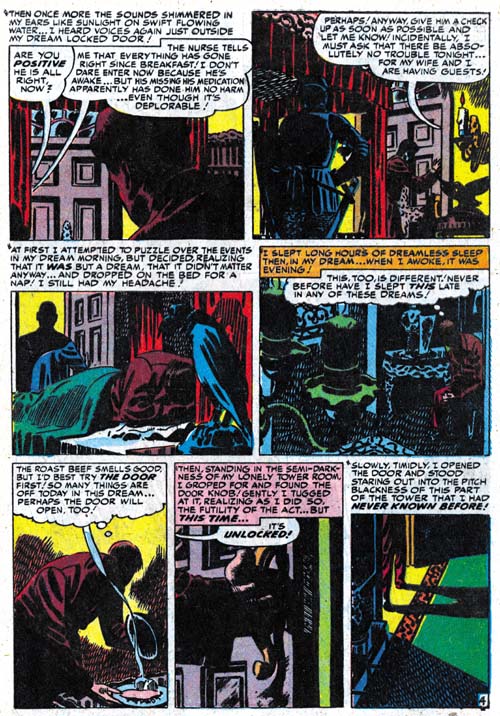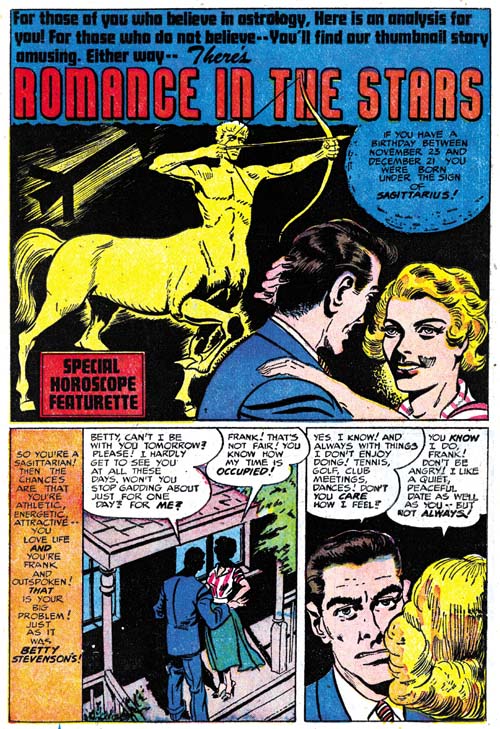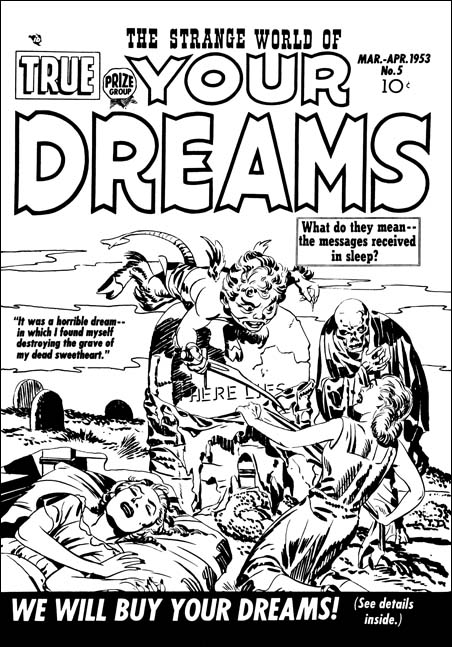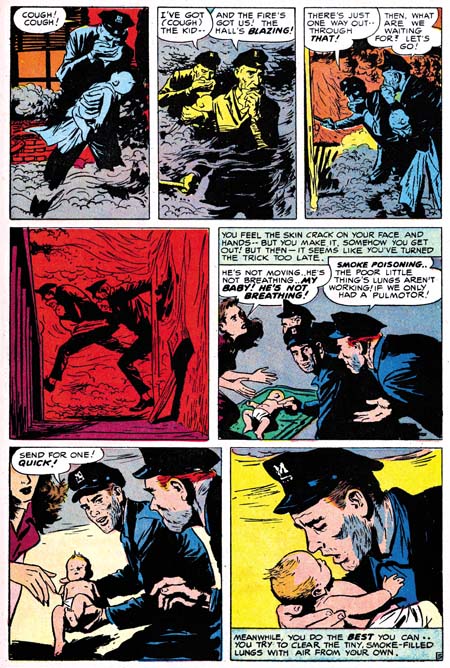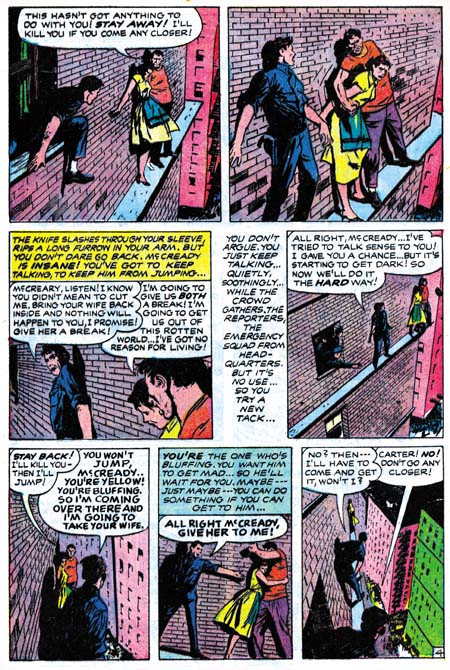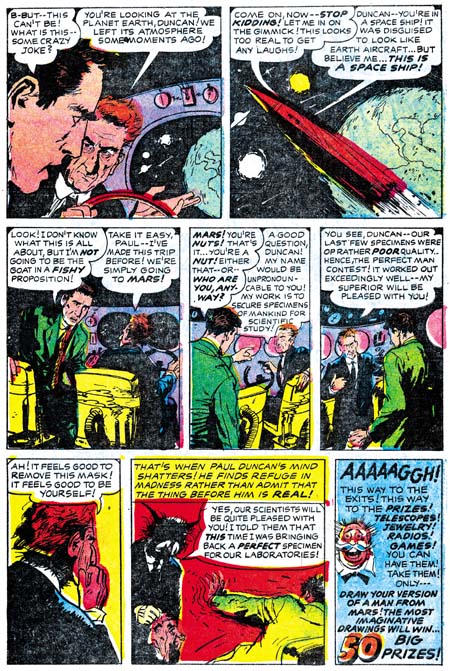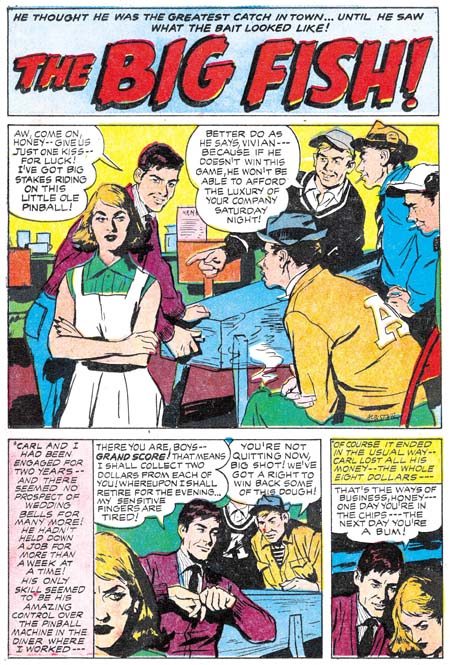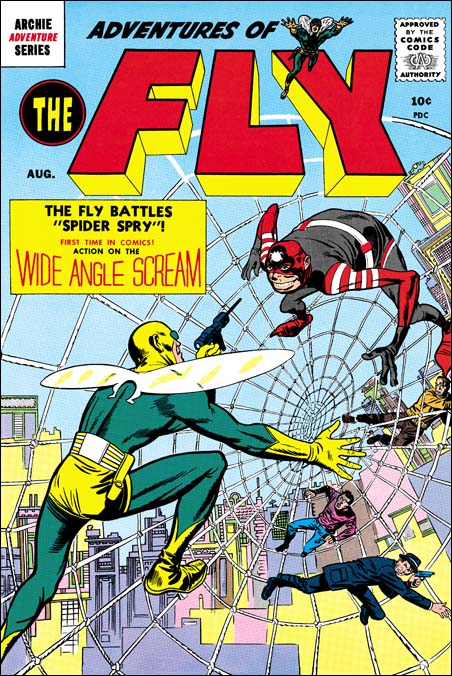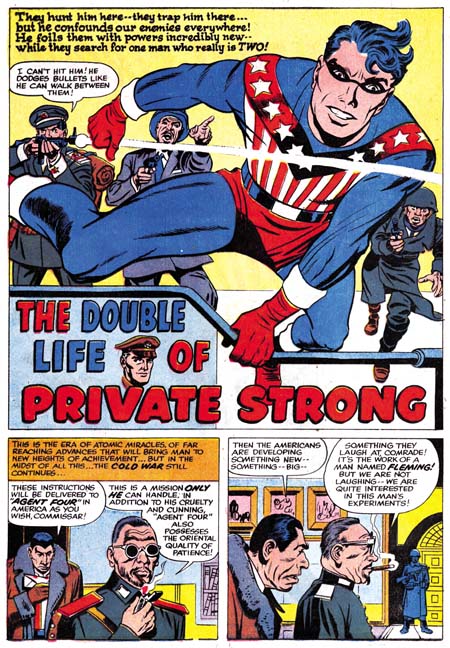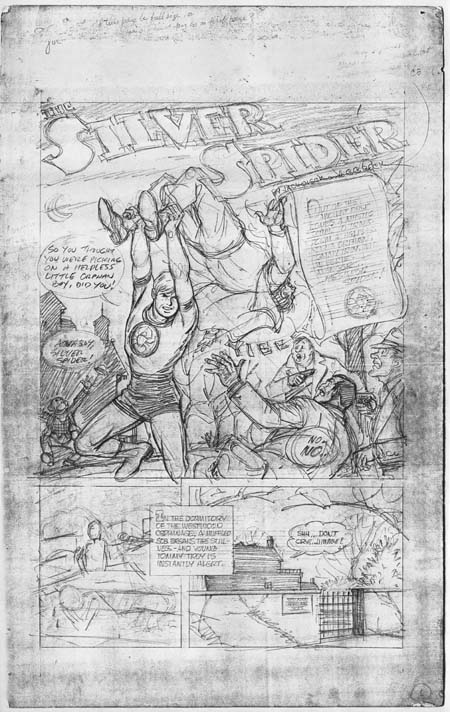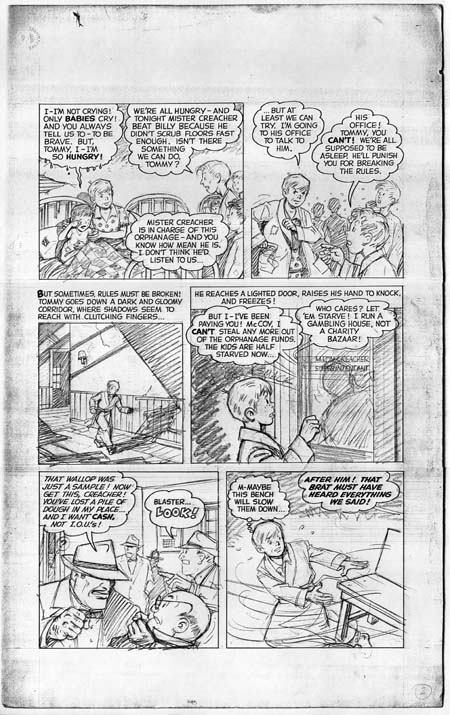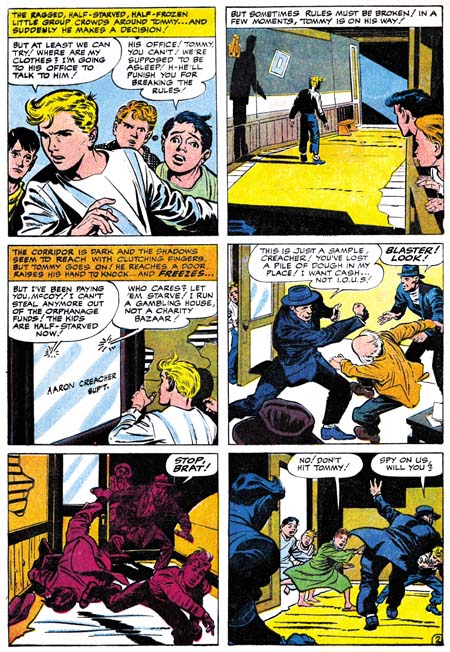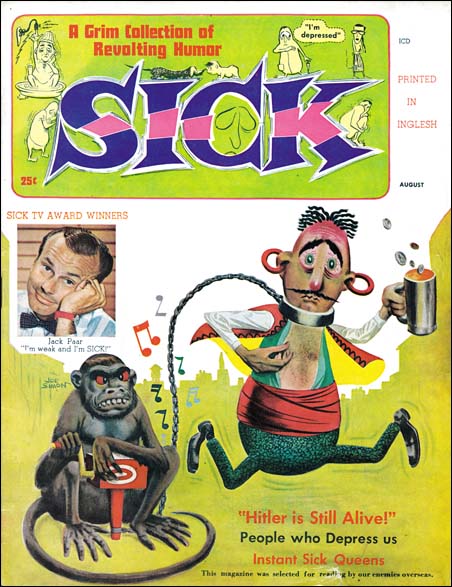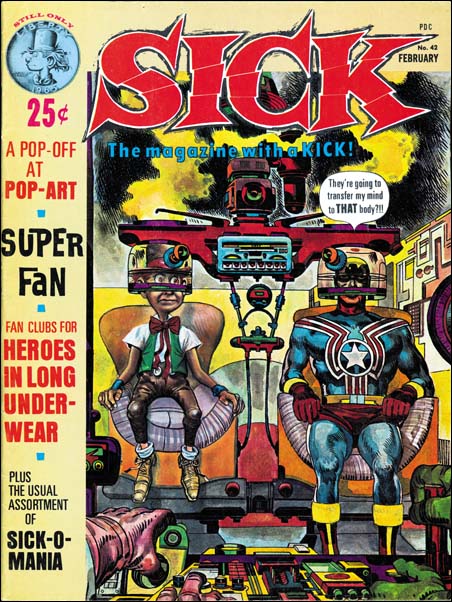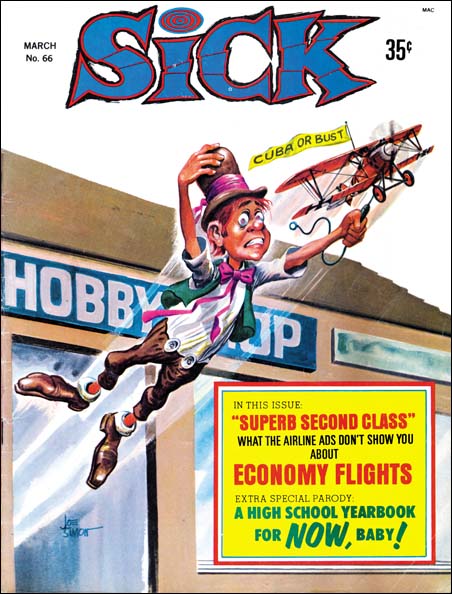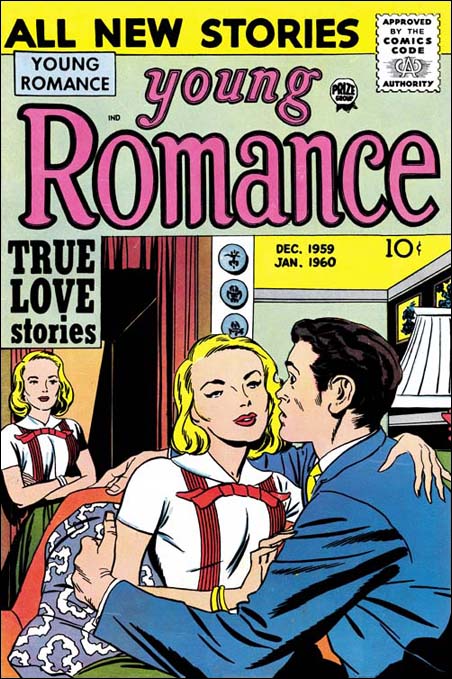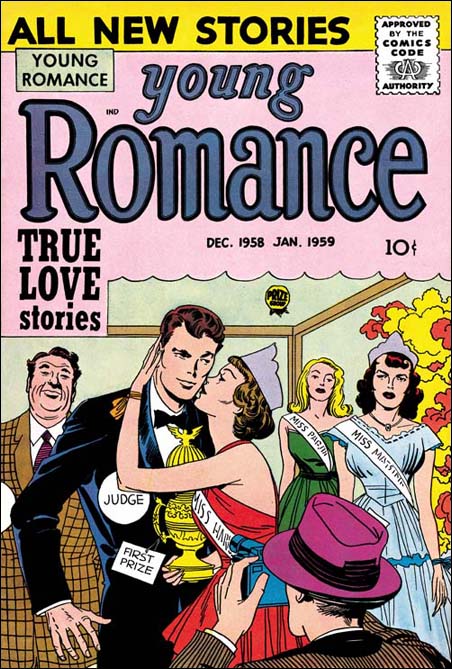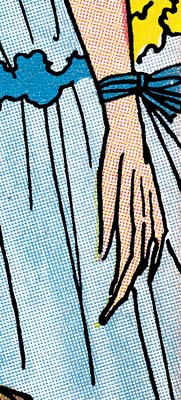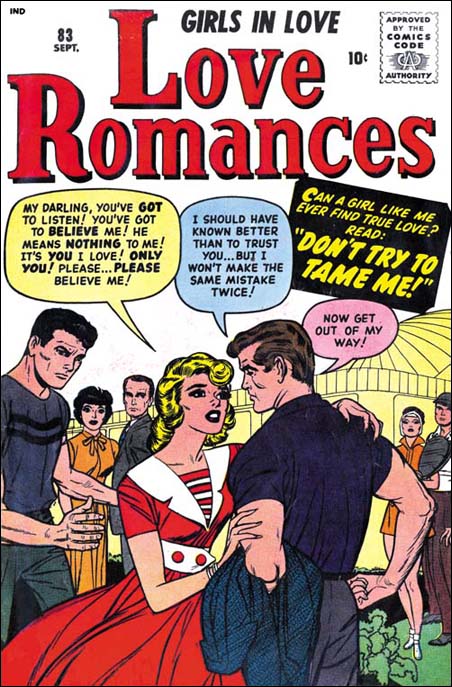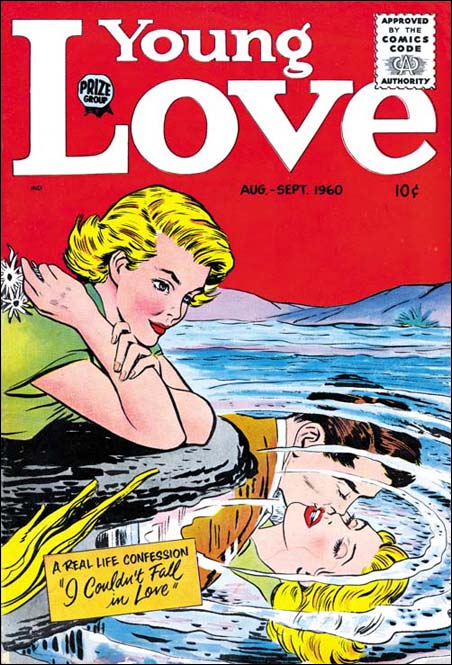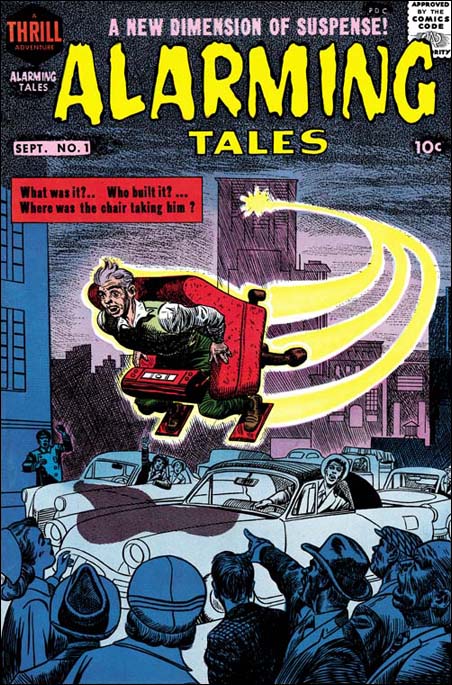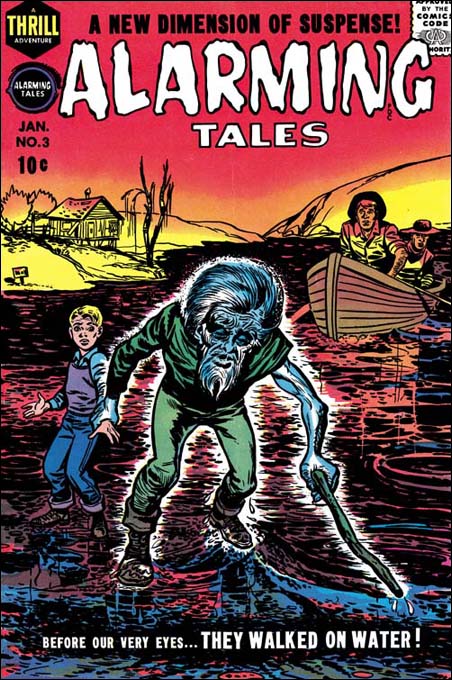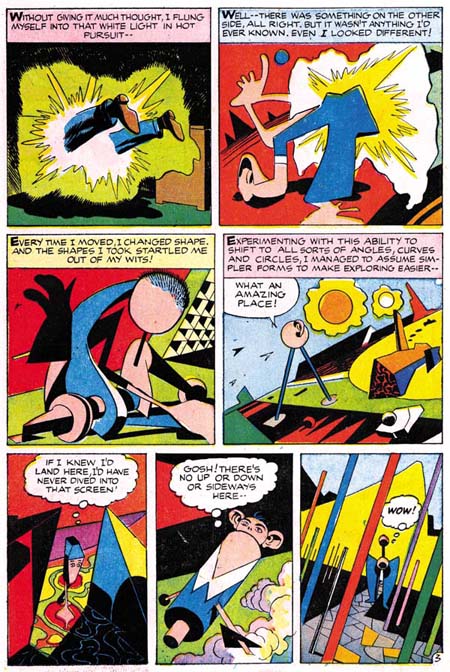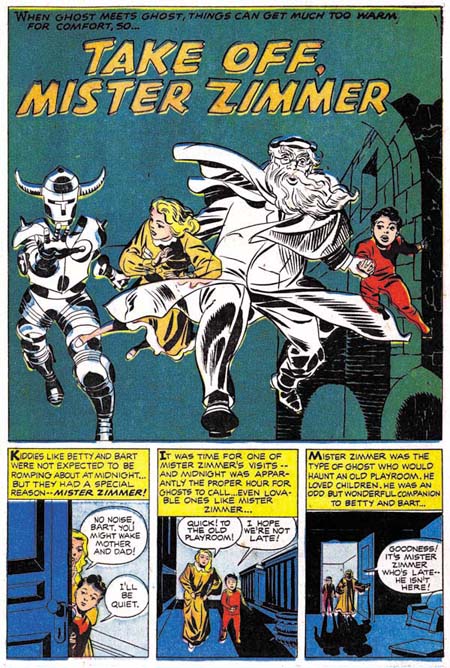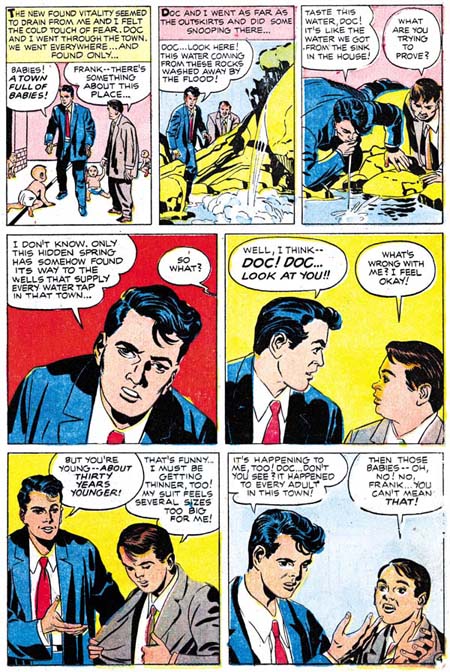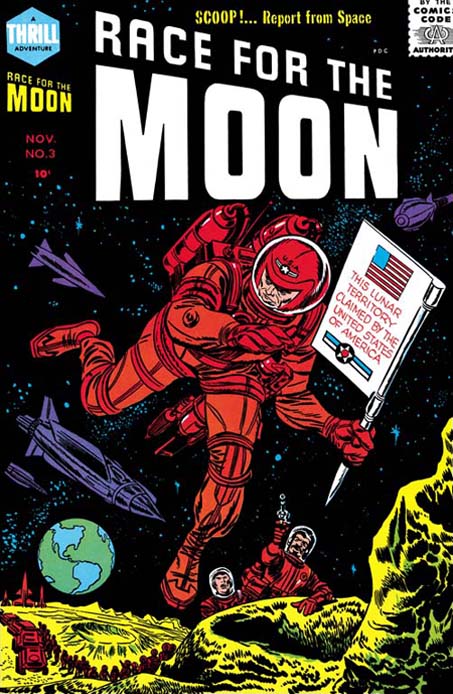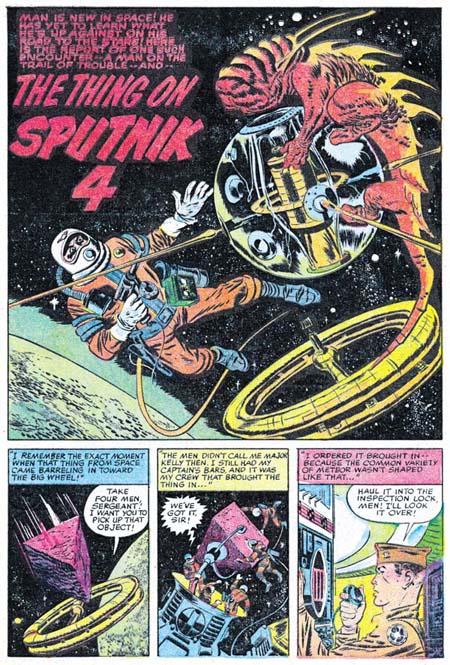Originally I was going to provide a summary of the events from the end of the Simon and Kirby collaboration. Instead I think it maybe more helpful to provide a time line (see below). But I do want to say something about the end of the partnership. Unlike my discussions in previous chapters, here I will be using calendar, not cover, dates. For me the final years of the Simon and Kirby team unfolded in a three stage process. The first was the end of the studio, probably sometime in 1955 between February (last release of Mainline comics ) and August (when Kirby returned to working in the Prize romance titles). After this the two continued to collaborate on projects, but the way they worked was not the same. The next stage was when Jack began to do freelance work around April 1956. With that, Simon and Kirby projects became just one of Jack’s commitments. Finally came the canceling of Alarming Tales and Race For The Moon after October 1958. From this point on Jack would give a hand on Joe’s projects, but they would not really be Simon and Kirby productions.
I would not be surprised if there were some hard feelings between Joe and Jack after the failure of Mainline. After all both had invested a lot of time and money. But if there were any bad sentiments they were not strong enough to prevent the two from working together. For every project that Simon got Harvey to do, Jack always came through with enough material to fill at least the initial issues. Everything leads me to believe that if any of those projects had been successful enough, Joe and Jack would have truly rejoined and opened another studio. But without any hits and with the need to support their families, there really was no way that they could renew the collaboration that they had in the past.
Would the collaboration have lasted if they had never started Mainline? Well Joe says that they invested a lot of their own money into that venture. Had they not lost that investment there would have a more resources to fall back on during this difficult period. But Prize still had its problems. How long could the team have weathered the canceling of titles and the lowering of profits? Although in the end Prize survived, it was a diminished company. The only way the S&K studio could continue would be to find new work. But that is exactly what Joe had tried to do after Mainline’s failure. Why would things have been any different without Mainline? With the shrinking of the comic book market during this period there was less opportunities left for a studio like Simon and Kirby’s. Even without Mainline, I am sure that Joe and Jack would still have had to go their separate ways in the end.
This series of posts was based primarily on the comics themselves and my own data base. I will list what few references I used after the Time Line. Among them is the paper by Thomas Lammer, which provided the dating for the Atlas Implosion. Although Tom’s work appeared in Alter Ego (volume 3, #49), I used his expanded self published version. I cannot think of a finer scholarly work of comic book history. If you don’t have a copy already, I strongly recommend you get one from Tom. He still has copies and are available for $12 (US & Canada) order from tlammers@new.rr.com.
My viewpoint about the events I covered here has been shaped by discussions with others. Unfortunately my memory is not good enough to always remember where credit belongs. But the Kirby List has a number of knowledgeable people and often spirited debates. But I would like to particularly thank the fine scholar Stan Taylor who I believe was the one who pointed out the oddly shaped panels in the initial Challengers. He also helped me clear up my confusion about Young Love caused by duplication in volume numbering. Also of great importance to me have been the email exchanges I have had with Christopher Harder. Christopher is not only one of the finest Simon and Kirby scholars, he shares with me, dare I say, a love of the Simon and Kirby romance comics.
Time Line
(Month given within parenthesis is the cover date)
1953
December (February)
Young Brides #13 (Prize, last photo cover for Prize)
1954
January (March)
Young Romance #67 (Prize, Kirby work stops appearing
in Prize romances)
February (April)
Fighting American #1 (Prize)
April (June)
Senate committee questions Bill Gaines (5/22 & 5/23)
May (July)
Young Bride #17 (Prize, last monthly)
June (August)
Bullseye #1 (first Mainline)
July (September)
Young Romance #73 (Prize, S&K production credits in Prize stop)
Young Love #61 (Prize, S&K production credits in Prize stop)
Black Magic #32 (Prize, S&K production credits in Prize stop)
August (October)
Frankenstein Comics #33 (Prize, last issue)
September (November)
Black Magic #33 (Prize, title stops, will resume in 1957)
October (December)
Comic Code Authority created (10/26).
Young Romance #80 (Prize, last monthly)
Young Love #63 (Prize, last monthly)
December (February)
Witches Western Tales #29 (Harvey, with Boys' Ranch reprints)
Thrills of Tomorrow #19 (Harvey, with Stuntman reprints)
Win A Prize #1 (Charlton)
1955
January (March)
Police Trap #4 (Mainline, first with Comic Code stamp)
February (April)
Bullseye #5 (last as Mainline)
Foxhole #4 (last as Mainline)
Young Romance #81 (Prize, first bimonthly)
Young Love #64 (Prize, first bimonthly)
Witches Western Tales #30 (Harvey, with Boys' Ranch reprints)
Win A Prize #2 (Charlton)
Fighting American #7 (Prize, last issue)
Young Love #64 (Prize, return of S&K production credit)
March (May)
In Love #5 (Charlton, first of former Mainline titles to be released
by Charlton)
April (June)
Charlie Chan #6 (Charlton, formerly by Prize in 1948 and 1949)
May (July)
I Love You #7 (Charlton, continuing from In Love numbering)
July (September)
Police Tray #6 (Charlton, last of former Mainline titles to be
released by Charlton)
August (October)
Western Tales #31 (Harvey, with new S&K material)
Young Romance #79 (Prize, Kirby work returns to Prize romance)
October (December)
Young Romance #80 (Prize, start of all-Kirby Prize romances, last
S&K production credit)
Charlie Chan #9 (Charlton, last issue)
November (January)
Hi-School Romance #47 (Harvey, first John Prentice for Harvey
romance)
Warfront #28 (Harvey, Kirby cover)
Black Cat Mystery #57 (Harvey)
December (February)
Hi-School Romance #48 (Harvey, start of Bill Draut for Harvey
romance)
1956
January (March)
Love Problems And Advice #38 (Harvey, start of Kirby covers for
Harvey romance)
Western Tales #32 (Harvey, Simon cover)
May (July)
Western Tales #33 (Harvey, last issue)
Warfront #29 (Harvey, Kirby cover)
July (September)
Leader News goes bankrupt
Prize Comics Western #119 (Prize, last issue)
Black Cat Mystic #58 (Harvey)
September (November)
Young Brides #30 (Prize, last issue)
Battleground #14 (Atlas, first Kirby work for Atlas)
October (December)
Young Romance #85 (Prize, last all Kirby)
Young Love #73 (Prize, Young Love stops, last all Kirby)
Hi-School Romance #58 (Harvey, last Kirby Harvey romance cover)
Yellow Claw #2 (Atlas, First Kirby work for Yellow Claw)
December (February)
Showcase #6 (DC, start of Kirby for DC, first Challengers of the
Unknown)
1957
February (April)
All For Love v1 n1 (Prize, new romance title, not produced by S&K)
Yellow Claw #4 (Atlas, last issue)
March (May)
Love Problems And Advice #45 (Harvey, last Bill Draut and John
Prentice for Harvey romance)
July (September)
Alarming Tales #1 (Harvey)
Black Cat Mystic #59 (Harvey)
Black Magic #34 (Prize, restart of title)
Personal Love v1 n1 (Prize, new romance title, not produced by S&K)
October (December)
Russia launches Sputnik 1 (10/4)
1958
January (March)
Race For The Moon #1 (Harvey)
Alarming Tales #4 (Harvey, last with Kirby)
Black Cat Mystic #62 (Harvey, series stops)
February (April)
Justice Traps the Guilty #92 (Prize, last issue)
July (September)
Race For the Moon #2 (Harvey)
September (November)
Sky Masters syndication starts (9/8)
Race For The Moon #3 (Harvey, last issue)
Alarming Tales #6 (Harvey, last issue)
1959
February (April)
Sky Masters Sunday strip starts (2/8)
Young Romance #99 (Prize, last time Simon and Kirby listed
as editors)
All For Love v3 n2 (Prize, includes story by Kirby)
April (June)
Double Life Of Private Strong #1 (Archie)
Challengers of the Unknown #8 (DC, last Kirby for DC)
June (August)
Adventures of the Fly #1
Double Life of Private Strong #2 (Archie, last issue)
July (September)
Personal Love v3 n2 (Prize, last issue, title changes to Going Steady)
October (December)
Young Romance #103 (Prize, last Kirby in Young Romance)
All For Love v3 n4 (Prize, last issue, title changes to Young Love)
November (January)
Adventure of the Fly #4 (Archie, last produced by Joe Simon)
Going Steady v3 n3 (Prize, first issue, title was Personal Love)
December (February)
Young Love #74 (Prize, Young Love restarts uses volume number
from All For Love)
1960
February (April)
Sky Masters Sunday strip ends (2/14)
April (June)
Young Romance #106 (Prize, first Joe Simon alone listed as editor)
June (August)
Sick #1 (Crestwood [Prize], produced by Joe Simon)
July (September)
Going Steady v4 n1 (Prize, last issue)
1961
February (April)
Sky Masters end (2/25)
September (November)
Black Magic #50 (Prize, last issue)
1963
February (April)
Young Romance #117 (Prize, last time Simon listed as editor)
April (June)
Young Romance #124 (Prize, last issue by Prize)
Young Love #94 (Prize, last issue by Prize)
Bibliography
Cooke, Jon B. “The Story Behind Skymasters”, The Jack Kirby Collector #15
Lammers, Thomas G., “Tales of the Implosion: A Detailed Look at the 1957 ‘Atlas Implosion’ and its Effects on Comic Books” (revised and expanded from article in Alter Ego vol. 3, no. 49
Simon, Joe and Jim Simon, “The Comic Book Makers”
Chapter 10, A Fly in the Mix
Chapter 1, The Beginning of the End
